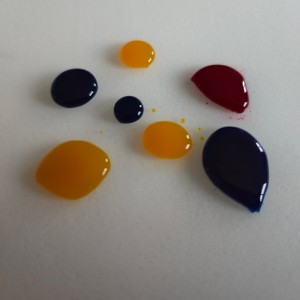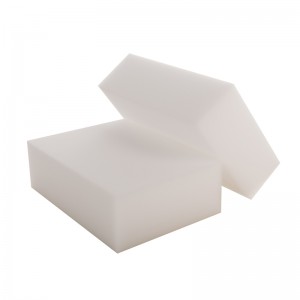
YADINA Hydrophobic Melamine Foam
Product Description
Yadina hydrophobic melamine foam is made from ordinary soft melamine foam that has been sliced and specially treated with a hydrophobic agent, with a hydrophobic rate of over 99%. It is recommended for use in sound absorption, noise reduction, insulation and heat preservation in ship, aircraft, aerospace, automotive, and building applications.
Compared with ordinary soft melamine foam, Yadina hydrophobic melamine foam has the same molecular structure and intrinsic properties. It is a highly open-cell, inherently flame-retardant soft foam material made of melamine resin as the matrix and foamed under specific process conditions. It only starts to burn when it comes into contact with an open flame, immediately decomposing to produce a large amount of inert gas, which dilutes the surrounding air, and quickly forms a dense charred layer on the surface, effectively isolating oxygen and causing the flame to self-extinguish. It does not produce dripping or toxic small molecules and can eliminate the fire safety hazards of traditional polymer foams. Therefore, without adding flame retardants, this foam can achieve the B1 level of low flammability material standard (DIN4102) and the V0 level of high flame retardancy material standard (UL94) set by the American Insurance Association standard. Moreover, this foam material has a three-dimensional grid structure with a pore rate of more than 99%, which can not only effectively convert sound waves into grid vibration energy and consume and absorb it, showing excellent sound insulation performance, but also effectively block air convection heat transfer, coupled with unique thermal stability, making it have good thermal insulation properties.
| Test standard | Description | Test results | Remarks | |
| Flammability | GB/T2408-2008 | Test Method: B-Vertical Combustion | VO level | |
| UL-94 | Experimental Method: Lateral Combustion | HF-1 level | ||
| GB 8624-2012 | B1 level | |||
| ROHS | IEC 62321-5:2013 | Determination of cadmium and lead | Pass | |
| IEC 62321-4:2013 | Determination of mercury | |||
| IEC 62321:2008 | Determination of PBBs and PBDEs | |||
| REACH | EU REACH Regulation No. 1907/2006 | 209 substances of very high concern | Pass | |
| Sound absorption | GB/T 18696.1-2004 | noise reduction factor | 0.95 | |
| GB/T 20247-2006/ISO 354:2003 | Thickness 25mmThickness 50mm | NRC=0.55NRC=0.90 | ||
| Thermal Conductivit W/m.K | GB/T 10295-2008 | EXO Thermal conductivity meter | 0.0331 | |
| Hardness | ASTM D2240-15el | Shore OO | 33 | |
| Basic Specification | ASTMD 1056 | permanent compression set | 17.44 | |
| ISO1798 | elongation at break | 18.522 | ||
| ISO 1798 | Tensile Strength | 226.2 | ||
| ASTM D 3574 TestC | 25℃ Compressive stress | 19.45Kpa | 50% | |
| ASTM D 3574 Test C | 60℃ Compressive stress | 20.02Kpa | 50% | |
| ASTM D 3574 Test C | -30℃ Compressive stress | 23.93Kpa | 50% |



